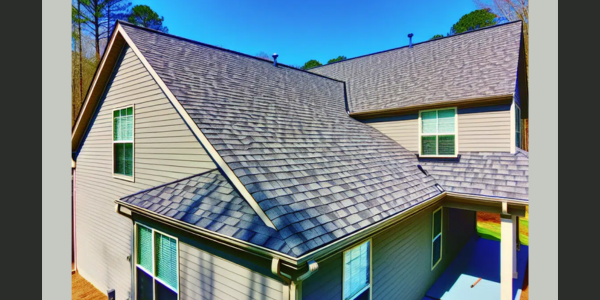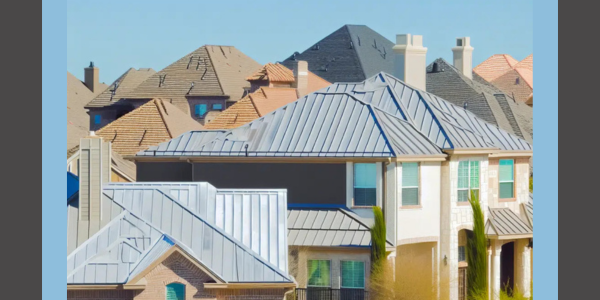Don’t fall flat on your roof installation!
August 18, 2025 at 6:00 a.m.By HER Roofing.
Your guide to flat and commercial roofs and why you should leave their installation and maintenance to the experts.
Despite their clean, simplistic aesthetic, flat roofs are not a piece of cake to install. These systems come with their own set of obstacles that only experts should be trusted to handle. Flat and commercial roofs require comprehensive planning, specific materials and masterful skills that professionals are ready to provide.
Here at HER Roofing, we understand the importance and necessity of expertise in flat and commercial roof success. We created this guide to equip building owners with the information needed to start roofing projects on the right foot.
Understanding flat roof and commercial roof systems
What is a flat roof?
Flat roofs may look level but usually have a slight slope (typically ¼-inch per foot) to allow water drainage. They’re common in commercial buildings and modern residential homes because of their cost-efficiency and streamlined appearance.
Types of flat roofs
- Built-up roofing (BUR): Multiple layers of bitumen and reinforcing fabrics
- Modified bitumen: Asphalt-based and often installed with heat or adhesives
- Single-ply membranes (TPO, PVC, EPDM): Lightweight, durable and energy-efficient
Common flat roof applications
- Retail buildings
- Office complexes
- Warehouses
- Multi-family residential properties
Expertise in flat roof systems involves more than just material knowledge — it requires understanding local building codes, climate impact, energy performance and long-term maintenance.
Why expertise is critical in flat roof installation and repair
F lat roofs are less forgiving
lat roofs are less forgiving
Flat roofs leave little margin for error. Improper installation or missed details can lead to:
- Water ponding
- Leaks and interior damage
- Insulation failure
- Reduced energy efficiency
Certified contractors understand the details
An experienced roofing contractor knows:
- The best membrane system for your structure and climate
- How to handle flashing, drainage and insulation
- How to properly slope the deck for water runoff
Industry knowledge prevents costly mistakes
Experienced roofers understand manufacturer requirements, warranty needs and common pitfalls. Their certifications and training ensure flat roof installations are completed with the highest standards.
Best practices for flat roof installation
A successful flat roof installation requires strict attention to detail. Here are the most essential practices professionals follow:
1 - Comprehensive inspection: Start with a detailed assessment of the structure.
2 - Proper slope planning: Even a slight miscalculation can cause water buildup.
3 - Flashing and edge detailing: Flashing prevents leaks where the roof meets walls or vents.
4 - High-quality insulation: Keeps energy costs low and adds durability.
5 - Seam sealing and waterproofing: Ensures the system is watertight.
6 - Compliance with local codes: Safety, insurance and warranty validation are necessary.
These steps aren’t optional — they’re essential.
How to choose the right contractor for flat roof installation
1 – Check experience and certifications: Look for companies with specific experience in flat roofing.
2 – Ask about past projects: Reputable contractors can provide case studies or references.
3 – Verify licensing and insurance: Protect yourself from liability and ensure quality work.
4 – Understand their process: From inspection to final walkthrough, professionals have a straightforward, structured approach.
5 – Look for eco-conscious options: Certified green contractors offer energy-smart options.
Flat roof repair: Why it’s not a DIY job
Even small leaks on flat roofs can indicate deeper problems. Attempting DIY repairs without understanding membrane systems, insulation layers or drainage paths can worsen the issue.
Risks of improper repairs
- Voided warranties
- Hidden structural damage
- Increased long-term costs
What professionals do differently
- Identify moisture intrusion beneath the surface
- Use compatible materials for seamless repairs
- Re-establish proper drainage and insulation
FAQs about flat roof installation and repair
Why is professional expertise necessary for flat roof installation?
Because flat roofs have minimal slope, poor installation can lead to water pooling, leaks and premature failure. Professionals ensure proper drainage, sealing and code compliance.
How long does a flat roof last?
A flat roof can last 20–30 years with proper installation and maintenance. Regular inspections and timely repairs can extend its lifespan even further.
What should I expect during a flat roof installation?
The process typically includes inspection, tear-off (if replacing), insulation installation, membrane application, flashing, sealing and a final walkthrough. Professionals ensure a smooth, efficient experience from start to finish.
Original article and photo source: HER Roofing
Have a question? AskARoofer.
Find your local roofing contractor in the AskARoofer™ Contractor Directory.














Comments
Leave a Reply
Have an account? Login to leave a comment!
Sign In